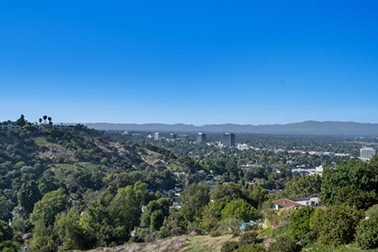Issue 162 - August 2025
RE: MEMBERS

Authority Members Taking Action to Reduce Wildfire Risk
The threat of wildfire seems ever-present in California, presenting unique challenges for jurisdictions throughout the state. As risk mitigation is at the heart of wildfire prevention, the California JPIA recognizes members who have taken various actions, including initiating directives, implementing cutting-edge technology, and using traditional methods to mitigate wildfire risks.
Ordinance
Recently, the City of Hidden Hills enacted Ordinance No. 393, becoming the first city in California to legally restrict high-risk outdoor activities during Red Flag Warnings. The ordinance, which the Los Angeles County Fire Department supports, bans outdoor grilling, open flame fires, spark-generating tools, and smoking when fire danger is elevated due to weather conditions like strong winds and low humidity. These measures aim to prevent wildfire ignition during the most hazardous periods.
“The City of Hidden Hills has demonstrated commendable leadership in public safety and risk mitigation by adopting Ordinance No. 393. By restricting high-risk outdoor activities during Red Flag Warnings, the City is taking a critical step to reduce wildfire ignition risks during vulnerable conditions,” said California JPIA Senior Risk Manager Toni Consolo. “This ordinance reflects a proactive approach to protecting lives and property and serves as a model for other communities facing similar wildfire threats.”
Technology
The City of Hidden Hills has a history of taking proactive measures to curtail wildfire hazards. Along with Authority members, Big Bear, Malibu, San Luis Obispo, and Santa Clarita, the city is a member of ALERTCalifornia and has installed perimeter wildfire detection cameras. The cameras are part of the statewide Cal Fire and UC San Diego network, which uses thousands of interconnected cameras for early wildfire detection and real-time monitoring. ALERTCalifornia is a public safety program that uses advanced technology to monitor and respond to wildfires and other natural disasters. It operates a statewide network of over 1,190 cameras and sensors, delivering real-time, open-source data to support emergency response, environmental research, and public safety decisions.
Traditional Methods
Several California JPIA members, including the cities of La Cañada Flintridge, Ojai, Paso Robles, Palos Verdes Estates, and San Clemente, have used goats, sheep, and other livestock to graze on dry brush and vegetation in open areas, canyons, and hard-to-reach hillside areas this year. Grazing is a method used to reduce fuel loads, establish defensible space, and promote community safety.
Whether first of its kind or traditional, the California JPIA recognizes member actions to reduce wildfire risk. If your agency is working to decrease wildfire exposure, send us an email. We may feature your actions in an upcoming newsletter article.
< Back to Full Issue Print Article
